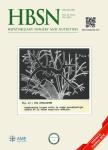FIB-4 score and hepatocellular carcinoma risk after hepatitis C virus cure:time to revise surveillance?
作者机构:Institut de Recherche sur les Maladies Virales et Hépatiques(IVH)Inserm U1110StrasbourgFrance Institut Hospitalo-UniversitairePôle Hépato-digestifHôpitaux Universitaires de StrasbourgStrasbourgFrance University of StrasbourgStrasbourgFrance Institut Universitaire de France(IUF)ParisFrance
出 版 物:《Hepatobiliary Surgery and Nutrition》 (肝胆外科与营养(英文))
年 卷 期:2020年第9卷第5期
页 面:661-664页
核心收录:
学科分类:1002[医学-临床医学] 100214[医学-肿瘤学] 10[医学]
基 金:Inserm University of Strasbourg European Union [ERC-2014-AdG-671231-HEPCIR, 755460-PRELICAN, 862551-HEPCAN] Horizon 2020 research and innovation program [667273-HEPCAR] Agence Nationale de Recherches sur le Sida et les Hepatites Virales [ANRS 15/1099] French Cancer Agency [ARC IHU201301187, IHU201901299] US National Institutes of Health [NIH/NIAID U19AI123862-01, NIH/NIAID R03AI131066, NIH/NCI R21CA209940] ITMO Cancer from AVIESAN INCa Inserm (Plan Cancer "Single cell" 2018 grant) Office of the Assistant Secretary of Defense for Health Affairs through the PRCRP [W81XWH-16-1-0363] LABEX [ANR-10-LABX-0028_ HEPSYS]
摘 要:Hepatitis C virus(HCV)is a main cause and important risk factor for hepatocellular carcinoma(HCC)in Western countries(1).Direct antiviral agents(DAAs)for HCV are highly effective and well-tolerated antiviral drugs which allow HCV cure even in patients with advanced liver ***,whilst HCV cure improves liver function and decreases overall HCC risk,a significant HCC risk persists in particular in patients with advanced fibrosis including cirrhosis who have the highest risk of developing HCC(2-4).



